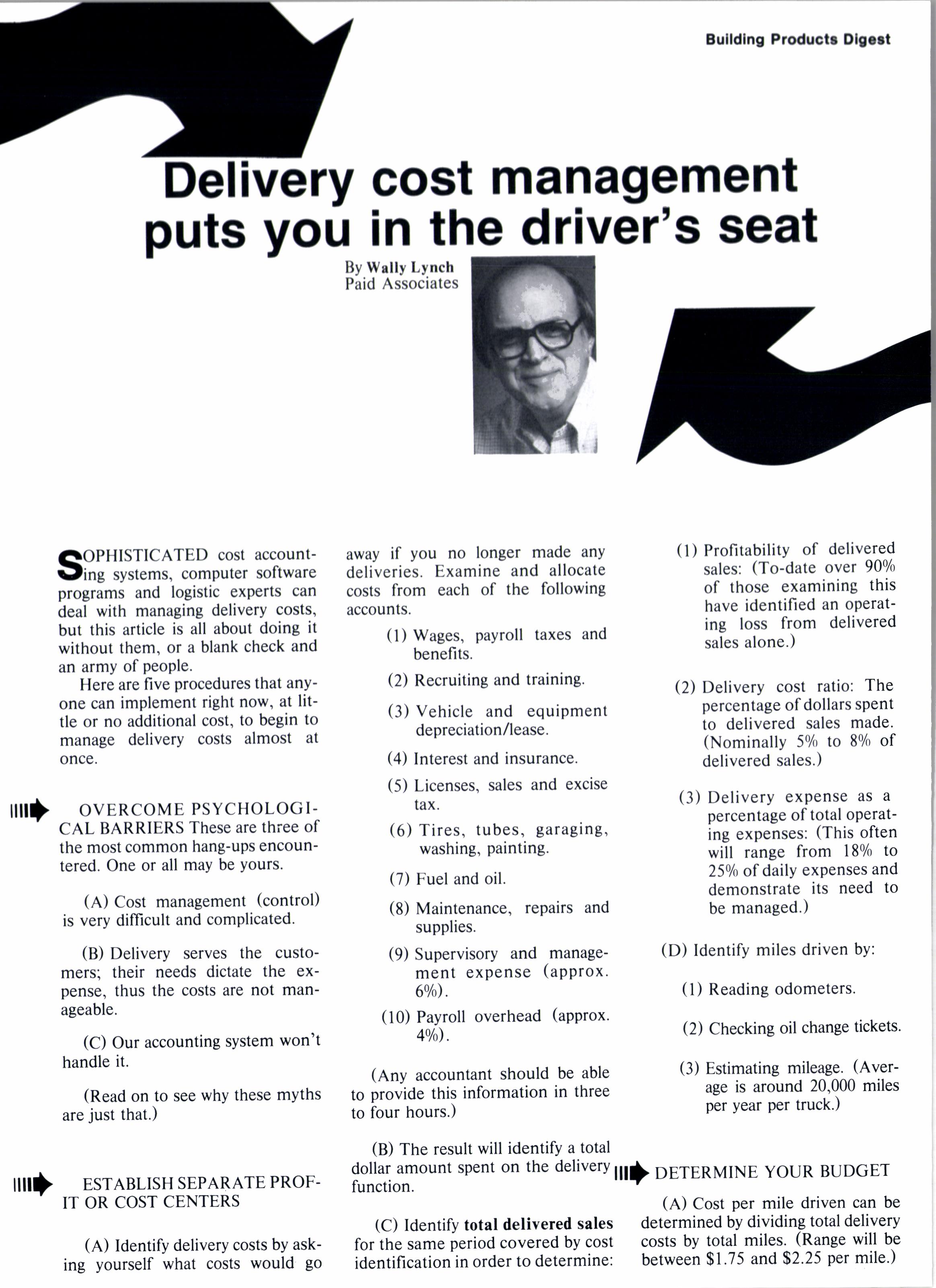
1 minute read
DefiVery cost management puts you in the driver's seat
By Wrlly Lynch Paid Associates
AOPHISTICATED cost accountEling systems, computer software programs and logistic experts can deal with managing delivery costs, but this article is all about doing it without them, or a blank check and an army of people.
Here are five procedures that anY' one can implement right now, at little or no additional cost, to begin to manage deliverY costs almost at once.
OVERCOME PSYCHOLOGI-
CAL BARRIERS These are three of the most common hang'ups encountered. One or all may be Yours.
(R) Cost management (control) is very difficult and comPlicated.
(B) Delivery serves the customers; their needs dictate the expense, thus the costs are not manageable.
(C) Our accounting sYstem won't handle it.
(Read on to see why these mYths are just that.)
away if you no longer made anY deliveries. Examine and allocate costs from each of the following accounts.
(l) Wages, PaYroll taxes and benefits.
(2) Recruiting and training'
(3) Vehicle and equipment depreciation/lease.
(4) Interest and insurance.
(5) Licenses, sales and excise tax.
(6) Tires, tubes, garaging, washing, painting.
(7) Fuel and oil.
(8) Maintenance, rePairs and supplies.
(9) Supervisory and _manage- ment exPense (aPProx. 60/o).
(10) Payroll overhead (approx. 4o/o).
(Any accountant should be able to provide this information in three to four hours.)
(B) The result will identifv a total
(A) Identify delivery costs by asking yourself what costs would go
(C) Identify total delivered sales for the same period covered bY cost identification in order to determine:
(l) Profitability of delivered sales: (To-date over 900/o of those examining this have identified an oPerating loss from delivered sales alone.)
(2) Delivery cost ratio: The percentage of dollars sPent to delivered sales made. (NominallY 5olo to 8o/o of delivered sales.)
(3) Delivery expense as a percentage of total operating expenses: (This often will range from l8o/o to 250lo of daily exPenses and demonstrate its need to be managed.)
(D) Identify miles driven bY:
(l) Reading odometers.
(2) Checking oil change tickets.
(3) Estimating mileage. (Average is around 20,000 miles per year per truck.)
(A) Cost per mile driven can be determined by dividing total delivery costs by total miles. (Range will be between $1.75 and $2.25 Per mile.)
(1) Having determined what cost per mile has been, set or peg a figure to cover what you believe it will be, based upon estimated miles to be driven.
(2) This figure (say $2 per mile) now becomes the standard to be recovered per mile per delivery.
(B) Set a pre-tax proht hgure on delivered sales. (Industry average is nominally 2.50/o on total sales.)
(C) Determine a budgeted delivery cost ratio as a percentage of delivered sales by dividing total delivery cost by total delivered sales. (Range is 5% to 8o/o)










